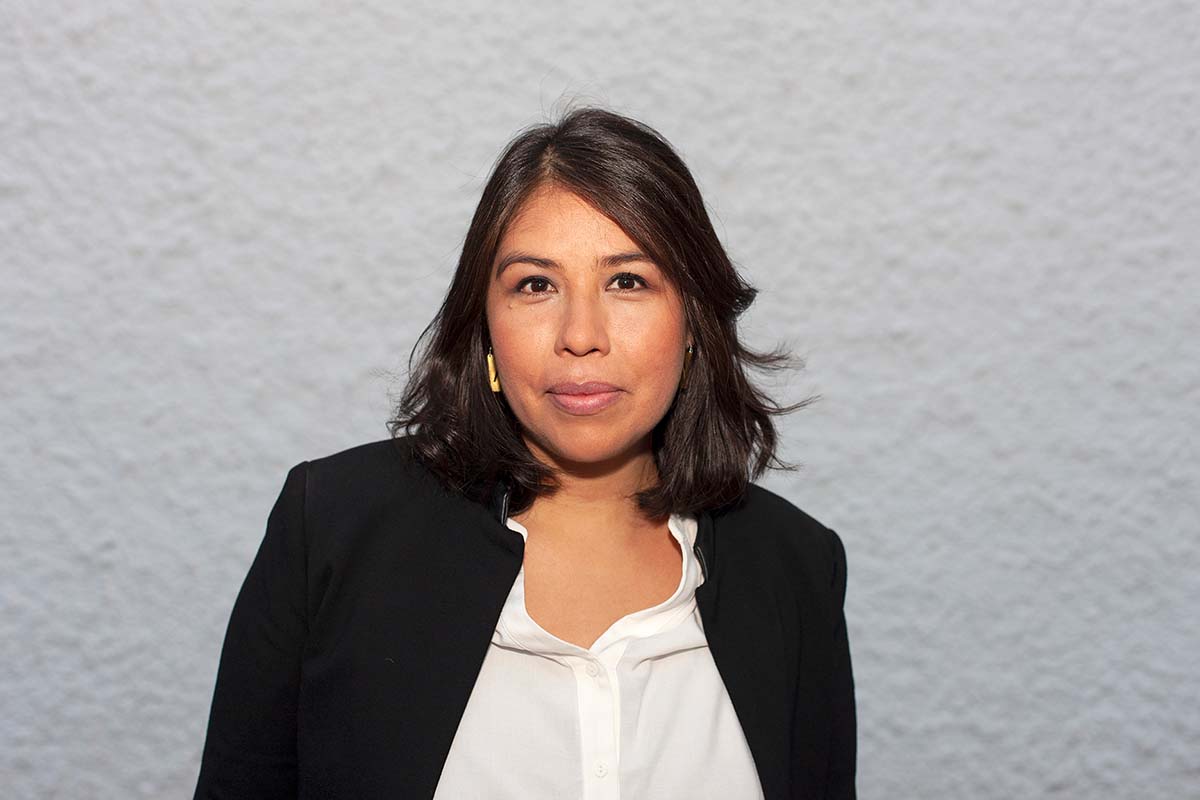Tracking pesticides in the environment
Chemist Aurea C. Chiaia-Hernández's research tracks the transport of pesticides in the environment to study their effects and impacts on aquatic ecosystems and identify threats to human health.
The funding instruments Eccellenza and PRIMA of the Swiss National Science Foundation SNSF enable highly qualified researchers to implement their projects within the framework of an assistant professorship at a Swiss university. In a series of interviews, we present six newly awarded researchers and their projects.

You have received a "PRIMA Grant" from the Swiss National Science Foundation SNSF. What does it mean to you to receive this Fellowship?
I am extremely happy to be granted the PRIMA because this will allow me to continue and expand my research beyond anything I have ever done so far due to limited work contracts and available resources. In addition, it will help to stablish myself as a researcher, follow my research interest and address my own research questions. This grant gives me the opportunity to manage my own team, expand collaborations, and it will give me the means to advance further in my career.
You have been selected from the SNF for your research project « Tracing plant protection products across the environment – Source, transport, sink, and relevance for risk assessment (TraPPP) ». What is the project about?
My project studies the fate of pesticides, more specific, plant protection products (PPPs). PPPs not only pose a local threat to the arable soils on which they are applied, but also to other ecosystems and human health, through transport into the atmospheric and aquatic environment. The dispersal of PPPs into the environment is receiving increased local and international attention and raises several scientific questions.
So far, many studies have focused on the occurrence of plant protection products in surface waters like rivers and streams and groundwater, but a comprehensive picture of the application, transport, and deposition (e.g. sediments) of currently used PPPs in the environment is still lacking. High concentrations of PPPs in sediment pose a threat to the entire freshwater environment because sediments are in constant exchange with the freshwater system. The goal of the TraPPP project is therefore to better understand the transport and transformation of currently used PPPs in the environment from the sources to nearby or distant sinks.
What made you chose the University of Bern for your Project?
I have decided to conduct my research at the University of Bern because I have received enormous support and interest for my research there: The contact with interdisciplinary scientists within the Institute of Geography, the Oeschger Centre for Climate Change Research and the interfaculty research collaboration "One Health" enables me to collaborate with, for example, the Institute of Plant Sciences and the University Hospital Bern Inselspital. At the University of Bern, I can also develop my teaching skills and interdisciplinary communication at the University. In addition, the University of Bern has been very supportive in organizing summer schools and international conferences. These activities have led to closer collaboration with various Swiss research institutions and fostered national and international networks.
What is the social relevance of your project?
The obtained results will assist in the current political debate on the use or ban of plant protection products as sound scientific basis is the foundation for many informed decision-making and policy design. Since political decision making is upfront and will be so in the foreseeable future, my research is essential and has practical implications of societal and environmental health relevance.
About Aurea C. Chiaia-Hernández
Dr. Aurea C. Chiaia-Hernández received her B.S and M.S in chemistry from Oregon State University (USA) and her PhD from ETH Zürich in 2013. Subsequently, she was a postdoctoral fellow at EAWAG, the Swiss Federal Institute of Aquatic Science and Technology where she was granted an Academic Transition Grant (ATG 2017) to expand her research into sedimentology. In 2018, she joined the paleolimnology group at the University of Bern and since 2019 she is currently the deputy group leader. Dr. Chiaia-Hernández has integrated two disciplines, environmental chemistry and paleolimnology. By linking these two research areas, she has developed novel analytical methods and applies multiproxy workflows to study compounds that could not be detected in the past (e.g., in the last 100 years) and to understand depositional systems to provide context to soil and sediment records as well as to investigate their effect and impact on aquatic ecosystems.
SNSF PRIMA
PRIMA grants are aimed at excellent women researchers who show a high potential for obtaining a professorship. PRIMA grantees conduct an independent research project with their own team at least at the group leader level within a Swiss research institution. PRIMA grants cover the grantee's salary and project costs for a five-year period. With this competitive grant, PRIMA grantees can carve out a name for themselves and take the next step up the academic career ladder: a professorship. If a PRIMA grantee is appointed as a professor in Switzerland during the funding period, the remaining amount of the PRIMA grant will be transferred to the new place of work as research funds. In 2021, the PRIMA program selected two researchers at the University of Bern.
SNSF Eccellenza Professorial Fellowships
SNSF Eccellenza Professorial Fellowships are aimed at highly qualified researchers who aspire to a permanent professorship. Eccellenza supports them in achieving their goal by allowing them to lead a generously funded research project as an assistant professor with their team at a Swiss higher education institution. Eccellenza covers the grantee's salary at the local rates applicable to assistant professorships and project funds of up to 1,000,000 Swiss francs for a five-year period. In 2021, the Eccellenza program selected four researchers at the University of Bern.